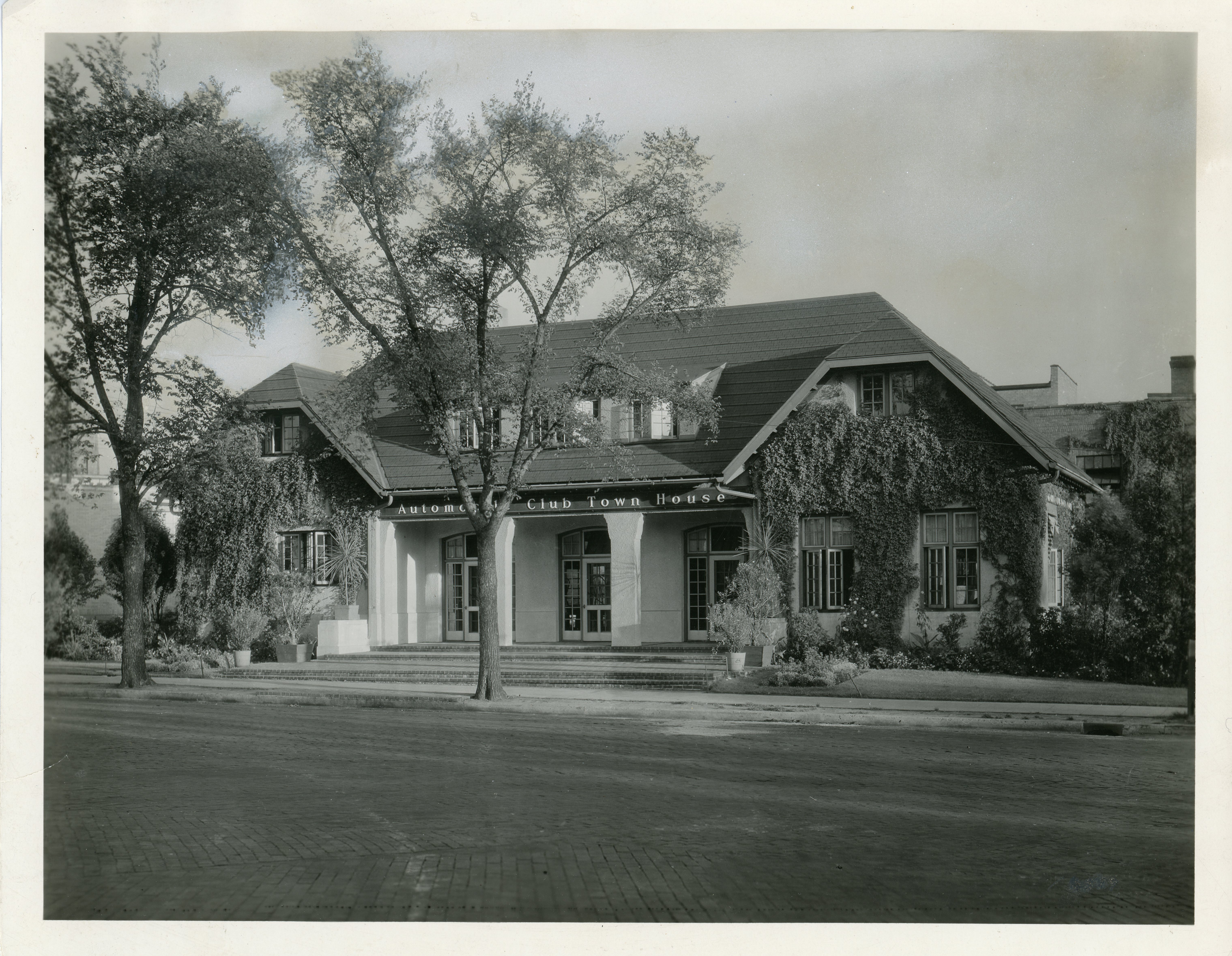October 24, 2018

While today’s auto clubs offer roadside assistance, in their heyday these clubs offered much more. In the earliest years of the automobile, they were a place for the small group of well-to-do motorists to socialize and organize on their own behalf as car owners. In so doing, these clubs played an important role in shaping the way Americans get around today.
The Automobile Club of Minneapolis was the first of these clubs founded in Minnesota. The club was chartered in November 1902 amidst a growing movement of such organizations. Owners of the first automobiles recognized a need for an expanded network of the high-quality roads their new vehicles demanded. In response, they banded together to demand such projects. The American Automobile Association (AAA) was the first would prove to be the most influential of these early clubs. This club was formed by the merger of several smaller clubs in Chicago, just a few months prior to the Minneapolis club’s founding. At the time, only 23,000 automobiles were in operation as compared to 17 million horses.
While their numbers may have been small, these early automobile owners were often the wealthiest and most well-connected members of their communities. The auto clubs they formed thus became not only potent political entities, but important social hubs. The earliest members of the Minneapolis club included George C. Christian, whose father built the home that would become the Hennepin History Museum, as well as L.B. Newell, the heir to the company that became SuperValu, and James Ford Bell, the founder of General Mills. Together, these men would lobby for improved roads and highways, better signage and safety practices, and against policies that severely limited their speed and prevented them from driving alongside horses.
In 1911, the auto club built a summer house for its members. Located in Bloomington on the Minnesota River bluffs, the house served as a gathering place and event space where parties and dinners were hosted. The house itself was designed by prominent Minneapolis architect Frederick Kees, and included garage stalls for member’s cars, a restaurant with an in-house chef, and dormitory rooms so members could stay the night before making the trek back into the city.
The clubhouse would remain a popular destination for club members and people from the community alike. Though its first building would be destroyed in a 1918 fire, supposedly set by a German-sympathizing caretaker during the war, it was rebuilt in 1920 and remained a fixture of the area into the 1950’s. The house would remain a destination for dinners and dancing, as well as hosting weddings and high school proms.

These plates were produced for the clubhouse by Syracuse China in early 1956, in what would be the final years of the clubhouse’s use. They bear the club’s logo, a winged steering wheel upon a red triangle, and were a part of a set that included similarly marked cups and saucers.
Ultimately, the house’s construction for seasonal use left it unable to make money for the club year-round, and it was sold to developers in 1958. Furnishings like these plates were saved, but the building itself would be demolished the next year. Today, the area where the clubhouse stood has been converted to homes.
Author Bio
Noah Barnaby is a Research Intern at Hennepin History Museum. He has a bachelor’s degree in History and Philosophy from the University of Minnesota, and focuses on Social, Economic, and Labor History.
Resources
A Hennepin History Magazine article celebrating the 60th anniversary of the auto club in Minneapolis.
“Remembering the Club Days of AAA”
Bloomington and St. Louis Park Historical Societies on the AAA Clubhouse.
